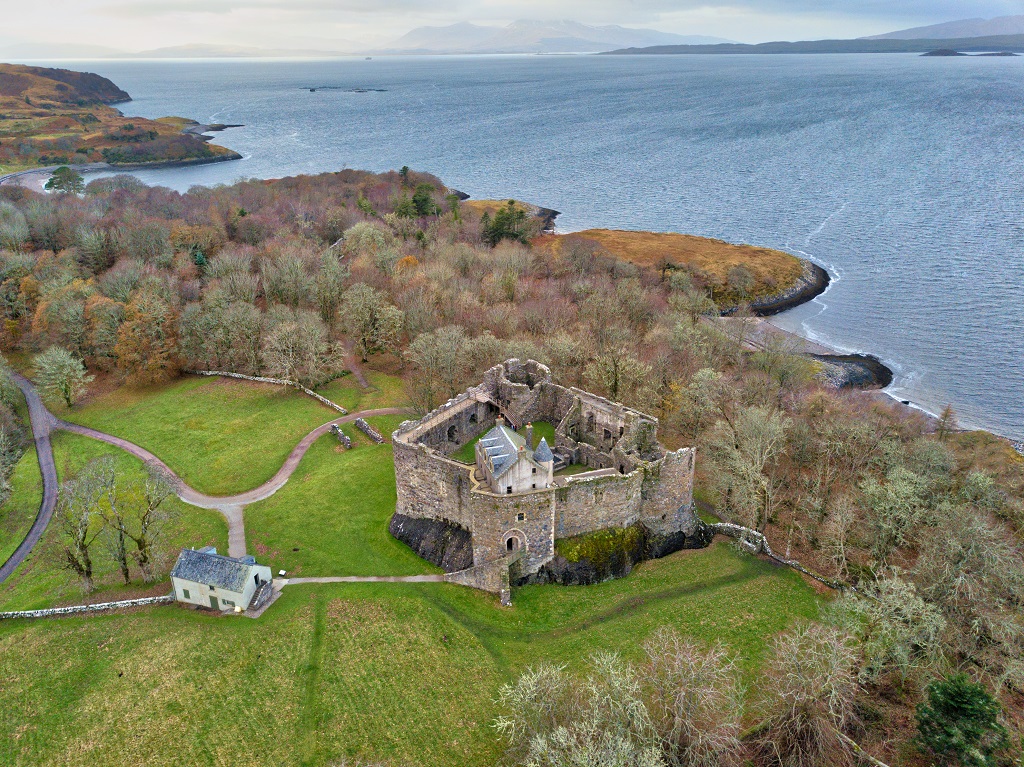
10 fascinating facts about… Oban and Argyll
Situated on Scotland’s scenic west coast, Oban is known as the Gateway to the Isles.
With its name being derived from its Gaelic name An t-Òban, which means The Little Bay, the titular bay is a perfect horseshoe shape that offers spectacular views as the sun sets.
Oban is a great place for tourists heading to the islands of the Inner and Outer Hebrides to stop off, and here’s 10 fascinating facts bout the town.
Oban holds the world record for the longest Strip the Willow: in July 2011 around 2,000 people stretched around the town’s harbour.
Bonawe Iron Furnace was built just north of Taynuilt in 1753. In 1781 it produced 42,000 cannonballs.
During the Cold War, the first Transatlantic Telephone Cable came ashore at Gallanach Bay, Oban. This carried the hotline between the US and USSR presidents.
Oban was a small village with just a few fishermen’s cottages in the early 1700s. When the Oban Distillery opened in 1794, it all changed as the town grew. It remains one of the oldest and smallest distilleries in Scotland.
Approximately 17.5% of the population of Argyll and Bute lives on an island.
Measuring 41 kilometres end-to-end, Loch Awe is the longest freshwater loch in Scotland.

Dunstaffnage Castle (Photo: Vadim Boussenko/Shutterstock)
Dunstaffnage Castle, at the mouth of Loch Etive, once held the Stone of Destiny before it was removed to Scone Palace.
Oban FC’s first Scottish Cup appearance was in the 1885-86 season. They were beaten 9-1 by Vale of Teith.
In 1249 Alexander II of Scotland died of fever on the Island of Kerrera.
Inveraray has become a major tourist spot since 2004, when legislation made it mandatory for coach drivers to stop for a break every two hours, the time it takes to reach the town from Glasgow.
- Click HERE to read 10 fascinating facts about Aberdeen
- Click HERE to read 10 fascinating facts about Aberdeenshire
- Click HERE to read 10 fascinating facts about Ardnamurchan
- Click HERE to read 10 fascinating facts about Argyll
- Click HERE to read 10 fascinating facts about Arran
- Click HERE to read 10 fascinating facts about Ayrshire
- Click HERE to read 10 fascinating facts about Blair Atholl
- Click HERE to read 10 fascinating facts about Callander
- Click HERE to read 10 fascinating facts about Dunoon and Dunblane
- Click HERE to read 10 fascinating facts about Dumfries and Galloway
- Click HERE to read 10 fascinating facts about Dundee and Angus
- Click HERE to read 10 fascinating facts about East Lothian
- Click HERE to read 10 fascinating facts about Edinburgh
- Click HERE to read 10 fascinating facts about Falkirk
- Click HERE to read 10 fascinating facts about Fife
- Click HERE to read 10 fascinating facts about Glasgow
- Click HERE to read 10 fascinating facts about Inverness
- Click HERE to read 10 fascinating facts about Lanarkshire
- Click HERE to read 10 fascinating facts about Largs
- Click HERE to read 10 fascinating facts about Lochaber
- Click HERE to read 10 fascinating facts about Loch Lomond and the Trossachs
- Click HERE to read 10 fascinating facts about Mid Argyll
- Click HERE to read 10 fascinating facts about Moray
- Click HERE to read 10 fascinating facts about Mull
- Click HERE to read 10 fascinating facts about Orkney
- Click HERE to read 10 fascinating facts about Perth.
- Click HERE to read 10 fascinating facts about Perthshire
- Click HERE to read 10 fascinating facts about Ross-shire
- Click HERE to read 10 fascinating facts about Royal Deeside
- Click HERE to read 10 fascinating facts about Skye
- Click HERE to read 10 fascinating facts about Speyside
- Click HERE to read 10 fascinating facts about Stirling
- Click HERE to read 10 fascinating facts about The Borders
- Click HERE to read 10 fascinating facts about The Cairngorms
- Click HERE to read 10 fascinating facts about The Isle of Bute
- Click HERE to read 10 fascinating facts about The Outer Hebrides
- Click HERE to read 10 fascinating facts about West Lothian
TAGS

